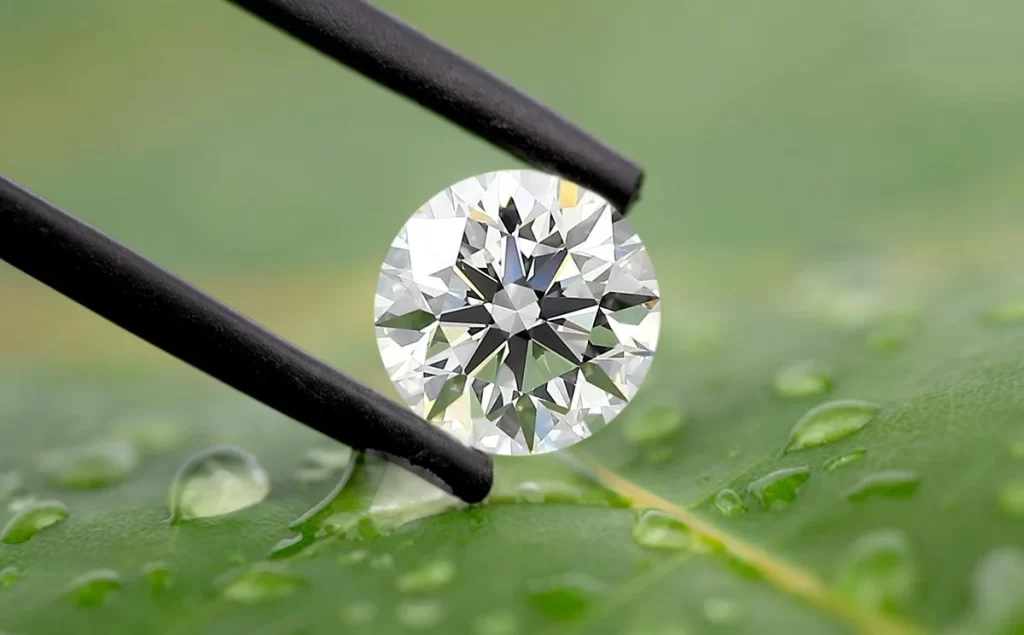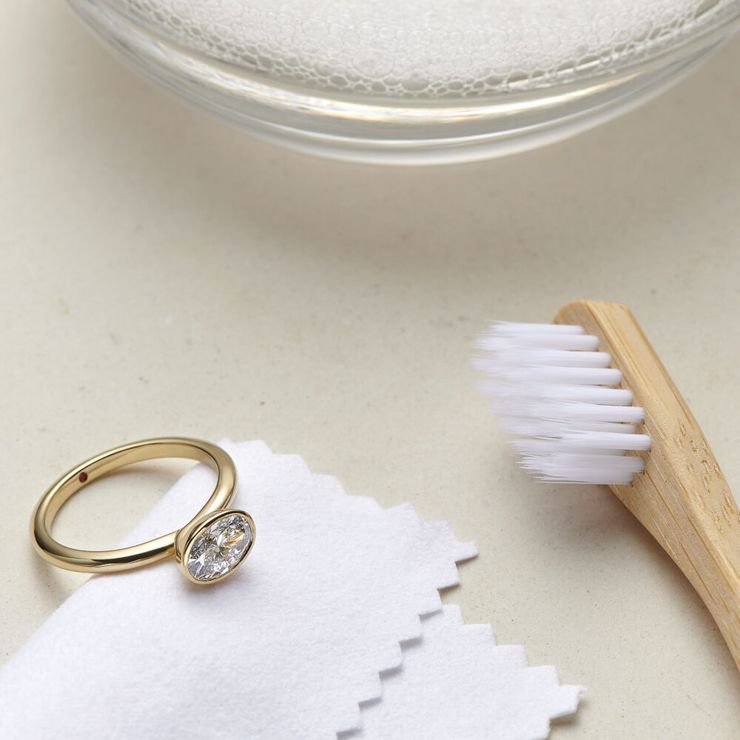The world of luxury is evolving, and at the heart of this transformation lies a growing concern for environmental sustainability. As industries across the globe strive to reduce their ecological impact, the diamond industry is no exception. wwF and lab diamonds, also known as man-made diamonds, are leading the charge, offering a more environmentally friendly alternative to traditionally mined diamonds. But how do these lab-grown diamonds connect to global conservation efforts, specifically those spearheaded by the World Wide Fund for Nature (WWF)? In this article, we explore the synergy between WWF’s mission for a sustainable planet and the rise of lab-grown diamonds in the jewelry industry.
WWF’s Environmental Mission
The WWF, one of the largest and most respected conservation organizations, has dedicated itself to protecting the world’s most vulnerable ecosystems and species. Established in 1961, WWF’s work focuses on conserving biodiversity, reducing the human footprint on nature, and advocating for sustainable practices in industries that impact the environment. Whether it’s protecting wildlife, fighting deforestation, or mitigating climate change, the WWF plays a crucial role in ensuring the longevity of our planet’s natural resources.
However, industries like mining—specifically diamond mining—pose significant challenges to WWF’s goals. Traditional diamond mining has a long history of environmental damage, including deforestation, water contamination, and soil erosion. This has made diamonds, while precious and beautiful, controversial from an ecological standpoint. The WWF’s efforts to promote sustainable practices across industries highlight the need for alternatives that minimize harm to the environment, and this is where lab-grown diamonds enter the picture.
The Environmental Impact of Traditional Diamond Mining
Before delving into the benefits of lab-grown diamonds, it is essential to understand the environmental footprint of traditional diamond mining. Diamond mining is an energy-intensive process that involves extensive land clearing, which disrupts ecosystems and displaces wildlife. In many cases, mining operations lead to the destruction of entire habitats, with devastating effects on local biodiversity. The extraction of diamonds also consumes vast amounts of water and contributes to water pollution due to the release of toxic chemicals used in the mining process.
Additionally, diamond mining is a significant contributor to carbon emissions, as the heavy machinery and transportation required for extraction and processing rely on fossil fuels. For a conservation organization like WWF, which is working to combat climate change and promote sustainable resource management, the environmental toll of diamond mining is a major concern.
Lab-Grown Diamonds: A Sustainable Alternative
Lab-grown diamonds offer a promising solution to the environmental challenges posed by traditional mining. Created in controlled laboratory environments using advanced technological processes such as High-Pressure High-Temperature (HPHT) and Chemical Vapor Deposition (CVD), lab-grown diamonds are chemically and physically identical to mined diamonds. The key difference lies in their origin. Instead of being extracted from the earth, they are cultivated in a laboratory setting, which significantly reduces their environmental impact.
One of the primary benefits of lab-grown diamonds is the minimal land disruption required for their production. Since they are grown in labs, there is no need for the large-scale excavation that characterizes traditional mining. This means that ecosystems remain intact, and wildlife is not displaced. Furthermore, the production of lab-grown diamonds requires far less water and energy compared to mining operations, making them a more sustainable choice for eco-conscious consumers.
Reducing Carbon Footprint with Lab-Made Diamonds
One of the most pressing global environmental issues is climate change, and reducing carbon emissions is critical to mitigating its effects. The WWF is deeply involved in initiatives aimed at reducing greenhouse gas emissions across industries. Traditional diamond mining, as mentioned earlier, is a significant contributor to carbon emissions due to the heavy machinery and energy-intensive processes involved.
Lab-grown diamonds, on the other hand, have a substantially lower carbon footprint. The energy required to create diamonds in a lab is far less than the energy expended in the extraction and transportation of mined diamonds. Moreover, some lab-grown diamond producers are turning to renewable energy sources, such as solar and wind power, to further reduce their environmental impact. This aligns closely with WWF’s mission to promote renewable energy and reduce the global dependence on fossil fuels.
Ethical Sourcing and Human Rights Considerations
While environmental sustainability is a critical concern, the diamond industry has also faced scrutiny for human rights abuses. In regions where diamonds are mined, issues such as child labor, poor working conditions, and the financing of armed conflict have tarnished the image of natural diamonds. This has led to initiatives like the Kimberley Process, which aims to prevent conflict diamonds from entering the market, but challenges remain.
Lab-grown diamonds offer a more transparent and ethical alternative. Since they are produced in controlled environments, the risk of human rights violations associated with traditional mining is eliminated. Consumers can rest assured that their lab-grown diamonds are free from the ethical concerns that have plagued the natural diamond industry for decades.
Lab Diamonds and WWF’s Role in Promoting Sustainable Practices
WWF’s involvement in sustainable business practices extends beyond conservation; it also works closely with industries to ensure that sustainability is embedded into the production and supply chain processes. The rise of lab-grown diamonds aligns with WWF’s vision of a future where industries operate with minimal environmental impact and ethical integrity. By advocating for products that are environmentally friendly and ethically sourced, WWF encourages consumers to make conscious choices that contribute to the well-being of the planet.
In the case of lab-grown diamonds, WWF can serve as a catalyst for change by raising awareness about the benefits of choosing sustainable alternatives. Through partnerships with businesses and educational campaigns, WWF can help consumers understand the environmental and ethical advantages of lab-grown diamonds over traditionally mined ones. This, in turn, can drive demand for sustainable luxury products and reduce the overall ecological footprint of the diamond industry.
The Future of Sustainable Luxury
The demand for sustainable luxury is growing, and lab-grown diamonds are at the forefront of this movement. With their reduced environmental impact, ethical production methods, and growing popularity among consumers, lab-grown diamonds represent a shift in the way people think about luxury and environmental responsibility. As more consumers prioritize sustainability in their purchasing decisions, the lab-grown diamond market is poised for continued growth.
WWF’s ongoing efforts to promote sustainability across industries can play a vital role in supporting the growth of lab-grown diamonds. By encouraging consumers and businesses to adopt environmentally friendly practices, WWF helps pave the way for a future where luxury and sustainability go hand in hand.
Conclusion: A Sparkling Future for Conservation and Conscious Consumerism
The connection between WWF’s mission and the rise of lab made diamonds is a powerful example of how industries can evolve to meet the challenges of environmental conservation. Lab-grown diamonds not only offer a sustainable and ethical alternative to mined diamonds, but they also support WWF’s broader goals of reducing the human impact on nature. As consumers become more aware of the environmental and social implications of their purchases, the demand for lab-grown diamonds will continue to grow, driving positive change in the luxury industry.
In choosing lab-grown diamonds, consumers can make a meaningful contribution to the protection of the planet’s precious ecosystems, aligning with the values that WWF has championed for over six decades. Together, we can create a more sustainable and ethical future, where luxury and environmental stewardship shine bright.





